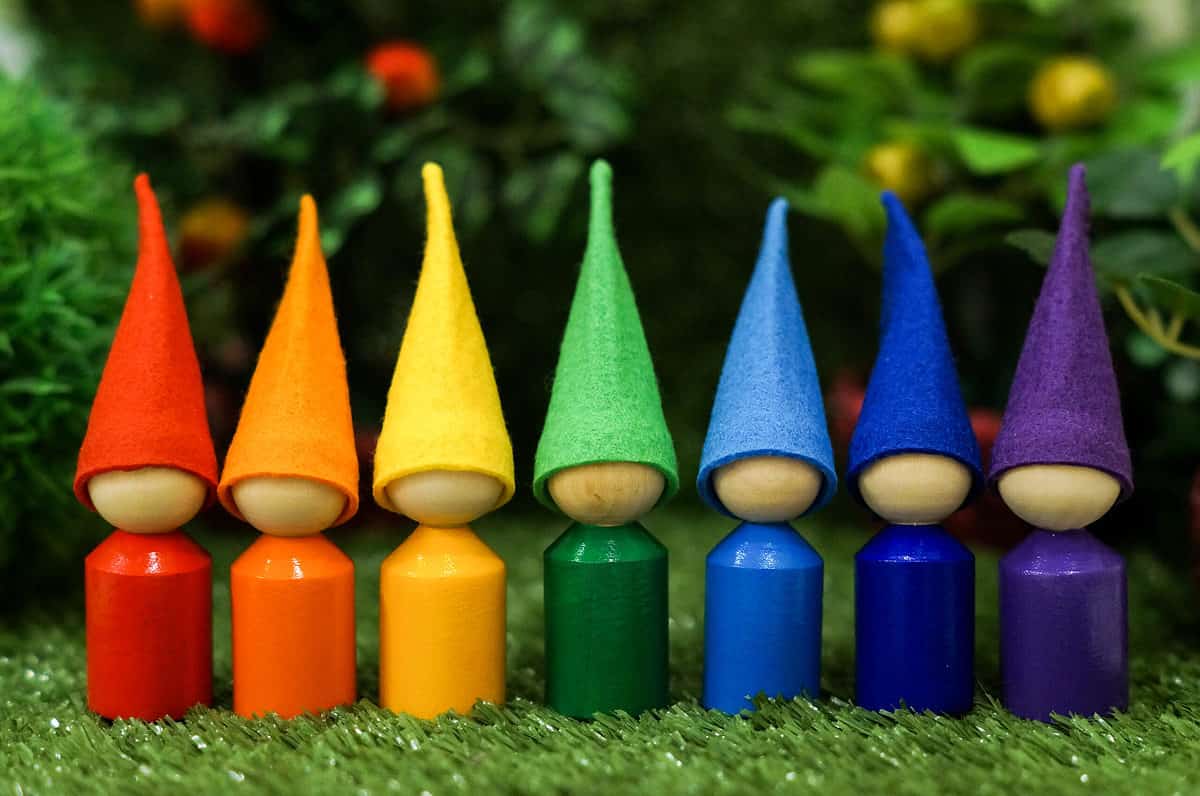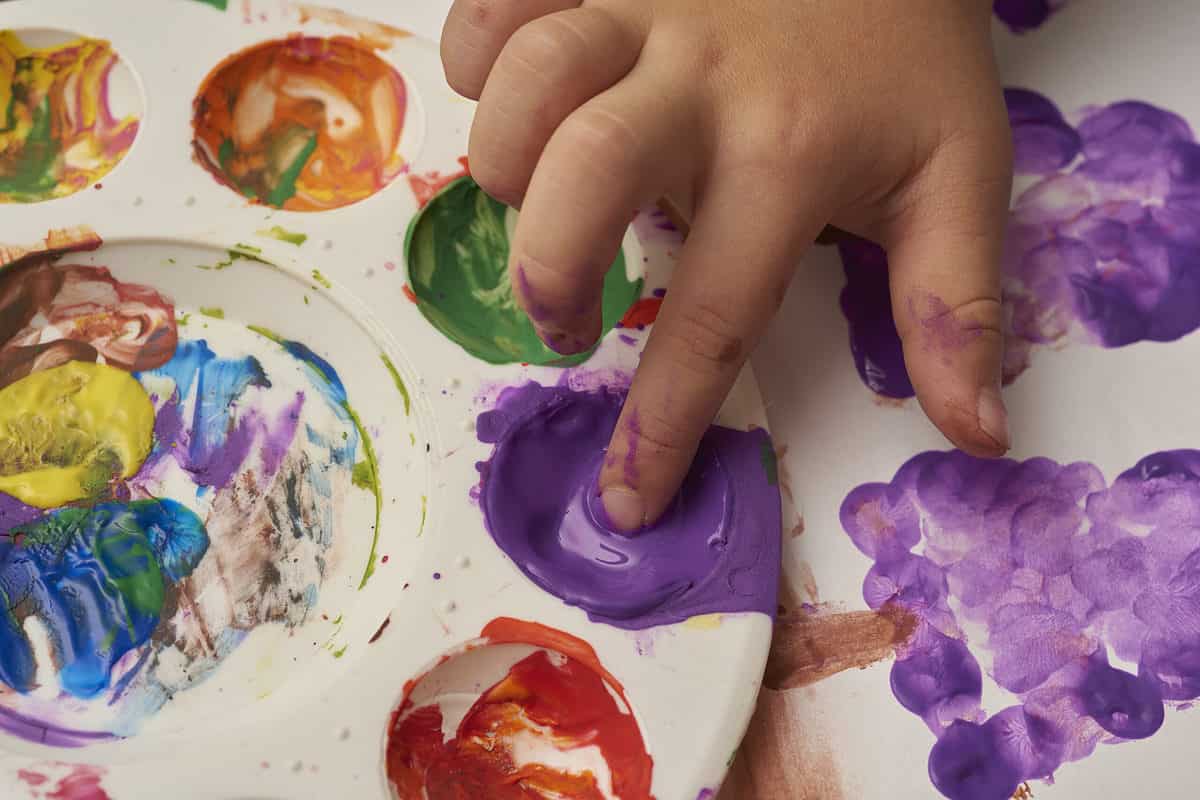It is an amazing milestone when your toddler starts to see the many amazing colors that make up the gorgeous world around us. Parents may hear different stories about when their toddler should be able to identify colors, and many may become worried if it seems that their child is falling behind in this regard. The truth is that every child may be a bit different when it comes to colors, and today, we will talk about what you should expect from your child and how to help them along. So, let’s talk about when your toddler will know colors.
Key Points of Your Toddler's Color Recognition
- Understanding colors are a vital part of your toddler's development. While kids will notice colors around 18 months old, it won't be until around 4 years of age that kids will be able to verbalize colors.
- It's important to start slow with your child while they're learning their colors.
- Color blindness is something that can be detected as early as 4 years old and is more common in boys. If they are struggling to understand various colors talk to an eye doctor about possible color blindness.
When Your Toddler Will Know Colors?

Your toddler may start to understand colors by 18 months.
©Marina Kapitu/Shutterstock.com
There are several stages that your child will go through when it comes to seeing and understanding colors. Within the first four months of their life, your baby will begin to register bright colors. At 18 months of age, your child will start to recognize colors but not quite know what they mean.
Although all kids are different, the Centers for Disease Control says that by 3 years old, your child should know at least one color, and by age 4, they should know multiple colors. It is essential to remember that every child is different. If they don’t recognize that many colors by this time, then they may be slightly delayed, but it is typically no cause for concern.
Your Baby’s Relationship With Colors in the First Year
First, a little background. During the first 3 months of your child’s life, they are unable to see very much at all, and they cannot identify colors. They are typically unable to tell the difference between two different objects, and their eyes may even be crossed. By 3 months old, they will at least start to reach for items they see.
It isn’t until about 5 months when your infant’s color vision will start to come in, although it won't be anywhere close to what adults see. They will be best at telling the difference between red and green. As the months continue, they will get closer to recognizing other colors.
If you believe that your child has any issues with their vision during this time, then there are numerous ways you can help. You can hang a mobile over their bed so they can work on their vision and depth perception. You might also give them wooden blocks and toys so they can play and learn.
Of course, if there is something more serious like your infant is unable to focus on any objects or their eyes don't react to movement, there might be something more serious happening. Always, always, always consult with your doctor with any and all health concerns or questions.
Teaching Your Toddlers Their Colors at 2 Years Old

Finger painting is a great way to teach your kids about the colors.
©haireena/Shutterstock.com
Your toddler will not instinctively know all of their colors or the names of colors, but it is around this time that they will start to comprehend the lessons that you teach them about color. Some children are able to remember colors by 18 months of age. With that said, most start to learn around 2 years old. However, while that age is not set in stone, you can still try to teach them colors by trying these tips and methods:
Teaching Primary Colors
As a parent, there are certain methods you should use when teaching your toddler about colors. Start by informing them about the primary colors: red, yellow, and blue. Since most other variants come from a combination of these colors, it is good, to begin with the basics so they can gain a better comprehension.
You can teach your kids about primary colors by showing them how to sort. Get three boxes and make one red, yellow, and blue. Then, find toys that are the same colors and have your child put them into the corresponding box. When you move on to the other colors, you can do the same exercise with those as well.
You might be surprised at how quickly children are able to learn. If you feel the game is getting too simple for them but they aren't ready to move on to more complex colors you might need to switch up the game. See if they are able to fix the colored blocks. Put the wrong colors in the wrong places – I.E. the red block goes in the blue space. – and see if they can fix your mistake.
Try One Color at a Time
Another strategy is to teach your toddler one color at a time, and once they get it, move on to the next one. Ask them to pick out a color that they like. Then, have them draw with it and have some fun. Over the next couple of days, show them items around the house and outside that are that color, so it sticks with them. Then, move on to the next color.
Use Toys Designed For Teaching Colors
If you want to make learning fun, then there are countless different toys that you can buy that can really do the trick. There are stacking cups, electronic toys that help them to color and paint, puzzle games where you match items, and matching egg kits where they need to put two parts of an egg together based on the color. Check the toy aisle at your local store, and you will find many options.
Label Everything With Colors
You can ensure that your toddler will know colors and improve their vocabulary skills at the same time by labeling the items around the house and their toys with the color that they are. So, you would put a label that says “red” on a red truck, and so on. Then, whenever they see or pick up the item, you can remind them of the color, and they can say it out loud. It is a great method to help them commit colors to memory.
Point Out Colorful Items You See During the Day
You can’t label everything, but you can point out the colors that you and your toddler see when walking outside or playing in their room. Make a game out of it. See how many objects of a certain color you both can find. This is another great way to help your child to learn their vocabulary.
Finger Painting
You can bring your lessons about color to a whole new level by teaching them via finger painting. This is a great way to differentiate between colors and use their imagination to make amazing art. Plus, there is something unique about the idea of learning colors by touching them and becoming one with the paint.
Videos and Songs
You can find many great educational songs and videos online and on television that will teach your child about colors. You can basically search for any color and the word “song” online, and you’ll find something that works. If, for some reason, you are unable to find a good video or tune, you can make one up yourself and sing it day after day.
Red Flags to Consider For Color Blindness
Keep in mind that your toddler may be a late bloomer when it comes to colors. Some children will not make a lot of progress until they are 4 years old, and that is not a cause for concern. However, your toddler should know colors at some point by then, at least in some capacity. If they don’t seem to register colors at all, then you may want to consider the potential possibility that your child may be color blind, at least to a point.
You will want to look for the signs below, and if you notice any, then contact an eye specialist:
- Your child has difficulty distinguishing between red and green – This is the most common type of color blindness. Although toddlers may confuse their colors from time to time, if they constantly mix up red and green then there may be an issue.
- Your child uses the wrong colors – Once you teach your toddler the proper colors for items around them, and they use them wrong, then there may be an issue. For instance, if they know that grass is green, but they always color the grass on their pictures red, then there may be a cause for concern.
- A family history of color blindness – If other members of your family are color blind and you notice the red flags with your children, then contact an eye specialist.
- Your child relies on their other senses more often – Most of us know what items are based on their appearance or color. But if your toddler is using their other senses more often, like smelling food before eating it instead of knowing what it is by sight, then you may want to speak to the doctor.
Conclusion
As you can see, there are many ways that you can help your toddler learn their colors, and with your help, they should have a good grasp on the subject by the time they are 3 to 4 years of age. Once your child knows their colors, you can move on to even more exciting milestones.
The image featured at the top of this post is ©xeuphoriax/Shutterstock.com

